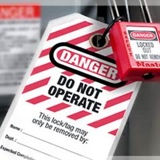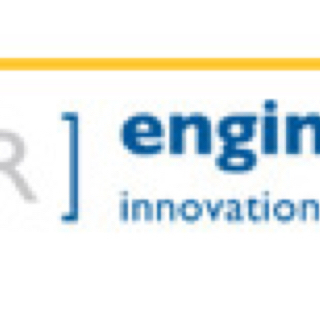Information
-
Audit Title
-
Document No.
-
Client / Site
-
Conducted on
-
Prepared by
-
Location
-
Personnel
3.0 Scope
-
Are the requirements of this element applied to all activities where the inherent hazardous energy could cause a fatal or serious injury (Distinguish between functional hazards and activity based hazards)?
-
Is the element applied to all fixed plant, mobile plant, machinery and equipment?
-
Is this element applied to all personnel (including contractors) working in the Group Company?
4.0 Accountability
-
Is there a process in place for formally appointing a person or persons other than CEO to be accountable to implement and maintain each requirement
-
Has a person or persons other than the CEO been assigned accountability for implementing and maintaining each requirement of this FPE?
4.1 Hazard identification risk assessment and control
-
Has the survey been preformed?
-
Does the survey meet the requirements of this element by covering all hazardous energy sources and all plant, machines and equipment within the plant?
-
How have hazardous energies been identified?
-
Is the survey report set out to show the requirements:<br>The type of Plant/Equipment/Machine<br>
-
Its identification name or number / HAC code and location
-
The different types of hazardous energy sources associated with that Plant/Equipment/Machine
-
The isolation points for each identified hazardous energy source (these may be local and/or remote)
-
Has the Group Company undertaken a critical task analysis (risk assessment) of each isolation to determine if a documented safe work procedure is required?
-
Does the group company have a “generic’ isolation process which can be applied to isolations which don’t have a specific procedure?
-
Is this generic Process also applied within the documented procedures to ensure consistency in application and safety?
-
Do the safe work procedures meet the requirements of this element?
-
Are there documented procedures for live testing?
-
Are these procedures approved by an authorised person?
-
Is there an authorised isolation officer?
-
Is there a formal Isolation and lockout procedure/process/requirement which meets steps set out in this element?
-
Are visitors issued with a visitors lock?
-
Is the isolation officer required to supervise the visitor placing their lock?
-
Is there a task analysis tool available?
-
Is the task analysis tool applied to isolations which do not have a formal documented isolation procedure?
-
Does the task analysis tool require the identification of hazardous energies?
-
Is the nature and type of isolation identified in the task analysis?
-
Is there a process to ensure this requirement is met?<br>
4.2 Selection, Training, Competency and Authorisation
-
Is there a training and competency assessment system?
-
Is this system based on any local, national or international workplace competency system?
-
If not how are personnel assessed as being competent?
-
Have competency standards been set for the positions?
-
Has training and assessment taken place?
-
Is there an authorization system in place?
-
Is the training and results of assessments recorded?
-
Is an overview included in the general induction?
4.3 Communication and awareness
-
Is there a change management process in place?
-
Is this process used to assess the risks and communicate the change?
-
Are the people who will be impacted by the change identified?
-
Are the changes communicated to the impacted persons?
-
Is there an isolation and lockout awareness program?
-
Are the personnel who install, construct, inspect and maintain plant/equipment/machines targeted in this awareness and instruction program?
-
Does the awareness program specifically address: Reasons for isolation and lockout
-
Types of energies needing to be isolated
-
The difference between single isolations and multiple isolations
-
The rules and procedures associated with isolation and lockout
-
Are legal compliance requirements known and considered as one of the reasons for undertaking Isolation and lockout?
-
Do documented Isolation and lockout procedures exist?
-
Are they available in the workplace to people who perform isolation and lockout?
-
Are they adequate to perform an isolation safely?
4.4 Design, Purchase, Fabrication, Installation and Commissioning
-
Have design/purchase specifications been developed for plant/equipment to ensure that hazardous energies can be isolated and locked out?
-
Are the specifications applied to the design, purchase, hire or contracting of all fixed and mobile plant?
-
What are the design / purchasing specifications based on?
-
Is there a colour coding or similar distinction between the different types of locks required in the isolation process?
-
How has the group company ensured that personal locks can only be opened with the key provided?
-
Is there a formal commissioning system in place to ensure that plant and equipment has been inspected to confirm it has the capacity to be isolated?
-
Does it apply to all?
4.5 Work method and condition control
-
Is plant/equipment/machines assessed before work commences near or on them for the potential release of hazardous energies?
-
Is isolation and lockout applied before work commences?
-
Is there a competency criteria established for a person to be able to identify isolation points?
-
Are the people who do this in the group company formally trained?
-
What is the formal training process and does it meet the requirements of this standard?
-
Is there a training program in place to train personal lock holders?
-
Is it adequate i.e. does it meet the expectations of this standard?<br>
-
Does the isolation procedure or regulation have a documented process for the removal of a personal lock in exceptional circumstances? i.e. person has been found but is unable to return to site
4.6 Maintenance
-
Has the specialist equipment used to meet the requirements of this standard been identified?
-
Has a maintenance program been established in accordance with the element requirements?
-
How is maintenance / repair work recorded?
4.7 Emergency control
-
Has the group company considered the possible injuries from an isolation failure?
-
Does it have the capabilities (trained people, equipment and facilities) to provide first response for these injuries?
-
Has the group company developed a plan or entered into an arrangement to manage these potential injuries beyond first response i.e. does it have an adequate arrangement with local medical facilities (hospitals) to provide that support?
-
Has the first response capability been tested? If so how?
-
Has the GC tested the response capabilities of the hospital secondary responder to such injuries?
4.8 Monitoring, inspection and audits
-
Are isolation points included on planned inspection programs (checklists)?
-
Are these checklists developed for all plant/equipment and machines?
-
Are the results of these inspections recorded?
-
Is there a task/safety observation procedure?
-
Is there a task/safety observation program in place?
-
Does the program regularly cover:<br>Permit issuing procedures
-
Isolation and lockout procedures
-
Quality and scope of isolation and lockout in respect to the task being observed
-
Are the observers trained in isolation and lockout?
-
Does the group company have an annual audit program for its response to the requirements of this FPE?
-
Does the audit program evaluate the group company’s response for quality and effectiveness against the requirements of this element?
4.9 Reporting, assessment and corrective actions
-
Are there processes in place for reporting deficiencies in the I&L process e.g. hazard reports, incident reports?
-
Are non compliance with I&L processes required to be reported?
-
Are defects with Isolation and Lockout required to be reported?
-
Are corrective actions recorded and are action completed?
Conclusion and auditor's comments
-
Date of audit completed
-
Signature of auditor
-
Date of auditor's signature
-
Signature of auditee
-
Date of auditee's signature











